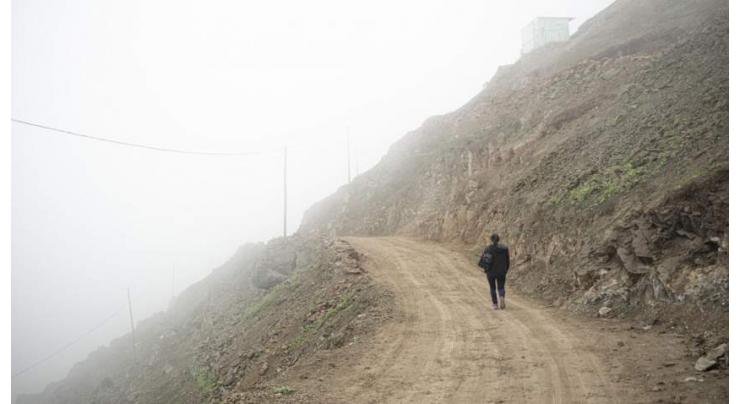
In Peru, A Small Carbon Footprint Is Not A Choice
Umer Jamshaid Published December 04, 2023 | 06:03 PM

Sofia Llocclla Pellaca always descends on foot from the unlit hill where she lives with hardly any electricity on the outskirts of Lima. She rarely eats meat and cooks on a gas or wood stove
Lima, (APP - UrduPoint / Pakistan Point News - 4th Dec, 2023) Sofia Llocclla Pellaca always descends on foot from the unlit hill where she lives with hardly any electricity on the outskirts of Lima. She rarely eats meat and cooks on a gas or wood stove.
She has never even heard of a carbon footprint.
While some climate-conscious people in rich countries try to restrict their carbon emissions, Pellaca's minimal impact on the environment is an unhappy side-effect of poverty.
Giving the poor a better life and spurring economic growth while also curbing planet-harming emissions is one of the major challenges facing world leaders meeting for COP28 climate talks next month in the United Arab Emirates.
"I walk down, I walk where I need to be, I walk back" up the hill, said Pellaca, 31, a single mother of two who barely uses public transport, owns no car or motorbike, and has never traveled by plane.
Pellaca is a domestic worker who earns less than half Peru's minimum wage of $265 per month.
She lives in a shantytown in the fog-covered desert highlands of the Peruvian capital that are home to many of Lima's 2.7 million poor people.
Peru's economy mainly leans on fishing and mining, with 73 percent of the working population in the informal sector.
It has one of the lowest carbon footprints in South America, emitting an average of 1.7 tons of carbon per person, compared to 4.2 tons in Argentina.
In the United States, the average annual footprint per person is 15 tons, more than three times the global average.
Experts say that to stay below the critical benchmark two-degree Celsius (3.6-degree Fahrenheit) rise in global temperature, individuals need to reduce their carbon footprint to less than two tons in the coming decades.
Eating less meat, taking fewer flights, driving less and using electricity more frugally are all billed as ways to reduce the emission of planet-warming greenhouse gases.
Related Topics
Recent Stories

Sharjah Animation Conference explores cross-cultural collaboration opportunities ..

Sharjah Public Library provides countless opportunities for young imaginations t ..

Sharjah Police launches 'Your belongings, your responsibility' awareness campaig ..

Dubai Police displays Innovative Tourism Security Services at 'ATM 2024'

Mohammad Haris, Aamir Jamal not part of national squad for Ireland, England: Bab ..

Erdogan opens former church to Muslim worshippers

Cultural events hallmark of a nation, Director RAC

Iraq hangs 11 convicted of 'terrorism': security, health sources

Stocks rise on renewed hopes of rate cuts

PM assures all-out support to Saudi investment

S.Africa building collapse traps 48 workers: city hall

Nilofar lauds efforts for development of national document aimed promoting balan ..
More Stories From World
-
Football: Italian Serie A results - collated
2 hours ago -
Football: Italian Serie A table
2 hours ago -
Atalanta climb into Serie A top five ahead of Marseille decider
2 hours ago -
Jones frustrates Wilson's quest to win World Snooker final
2 hours ago -
No let up yet for flood-battered south Brazil
3 hours ago -
Serie A blasts plans for government football finance body
3 hours ago
-
Prophet's Mosque accommodates over 4.2 million worshippers last week
3 hours ago -
UN experts slams Israel’s ‘sexual assault and violence’ against women, children in Gaza
3 hours ago -
Merlier pips Milan to Giro third stage, bold Pogacar holds lead
4 hours ago -

Sharjah Animation Conference explores cross-cultural collaboration opportunities, highlights new pro ..
4 hours ago -

Sharjah Public Library provides countless opportunities for young imaginations to take flight at SCR ..
4 hours ago -

Sharjah Police launches 'Your belongings, your responsibility' awareness campaign
4 hours ago


